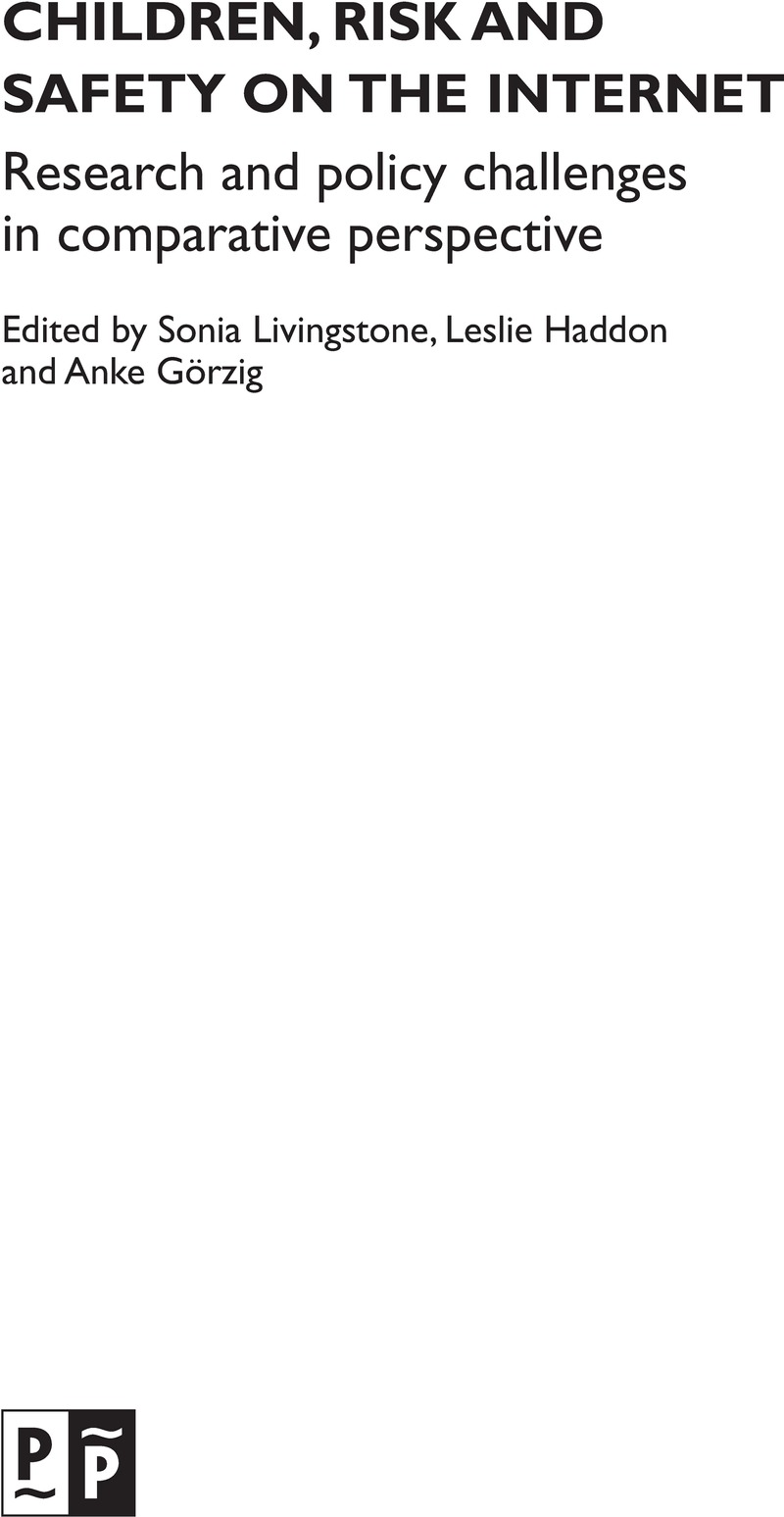Book contents
- Frontmatter
- Contents
- List of tables and figures
- Acknowledgements
- Notes on contributors
- one Theoretical framework for children's internet use
- two Methodological framework: the EU Kids Online project
- three Cognitive interviewing and responses to EU Kids Online survey questions
- four Which children are fully online?
- five Varieties of access and use
- six Online opportunities
- seven Digital skills in the context of media literacy
- eight Between public and private: privacy in social networking sites
- nine Experimenting with the self online: a risky opportunity
- ten Young Europeans’ online environments: a typology of user practices
- eleven Bullying
- twelve ‘Sexting’: the exchange of sexual messages online among European youth
- thirteen Pornography
- fourteen Meeting new contacts online
- fifteen Excessive internet use among European children
- sixteen Coping and resilience: children's responses to online risks
- seventeen Agents of mediation and sources of safety awareness: a comparative overview
- eighteen The effectiveness of parental mediation
- nineteen Effectiveness of teachers’ and peers’ mediation in supporting opportunities and reducing risks online
- twenty Understanding digital inequality: the interplay between parental socialisation and children's development
- twenty-one Similarities and differences across Europe
- twenty-two Mobile access: different users, different risks, different consequences?
- twenty-three Explaining vulnerability to risk and harm
- twenty-four Relating online practices, negative experiences and coping strategies
- twenty-five Towards a general model of determinants of risk and safety
- twenty-six Policy implications and recommendations: now what?
- Appendix Key variables used in EU Kids Online analyses
- Index
Frontmatter
Published online by Cambridge University Press: 07 September 2022
- Frontmatter
- Contents
- List of tables and figures
- Acknowledgements
- Notes on contributors
- one Theoretical framework for children's internet use
- two Methodological framework: the EU Kids Online project
- three Cognitive interviewing and responses to EU Kids Online survey questions
- four Which children are fully online?
- five Varieties of access and use
- six Online opportunities
- seven Digital skills in the context of media literacy
- eight Between public and private: privacy in social networking sites
- nine Experimenting with the self online: a risky opportunity
- ten Young Europeans’ online environments: a typology of user practices
- eleven Bullying
- twelve ‘Sexting’: the exchange of sexual messages online among European youth
- thirteen Pornography
- fourteen Meeting new contacts online
- fifteen Excessive internet use among European children
- sixteen Coping and resilience: children's responses to online risks
- seventeen Agents of mediation and sources of safety awareness: a comparative overview
- eighteen The effectiveness of parental mediation
- nineteen Effectiveness of teachers’ and peers’ mediation in supporting opportunities and reducing risks online
- twenty Understanding digital inequality: the interplay between parental socialisation and children's development
- twenty-one Similarities and differences across Europe
- twenty-two Mobile access: different users, different risks, different consequences?
- twenty-three Explaining vulnerability to risk and harm
- twenty-four Relating online practices, negative experiences and coping strategies
- twenty-five Towards a general model of determinants of risk and safety
- twenty-six Policy implications and recommendations: now what?
- Appendix Key variables used in EU Kids Online analyses
- Index
Summary

- Type
- Chapter
- Information
- Children, Risk and Safety on the InternetResearch and Policy Challenges in Comparative Perspective, pp. i - iiPublisher: Bristol University PressPrint publication year: 2012

